How to Consistently Grow Your Conversion Rates with Emotional Targeting
When people venture into AB testing they have a set agenda, like increasing registrations or downloads for example. All efforts are dedicated to increasing that one KPI and running different AB tests to improve it.
For me, conversion optimization has always been about more than just optimizing that one KPI. It’s about running meaningful tests that can teach us more about our customers and using those insights to change entire processes within the business leading to higher profits and revenues across the board. In essence, imagine being able to truly understand your customer on an emotional level and translate that knowledge into relevant, optimized interactions.
Done correctly, conversion optimization can help us optimize customer service processes, sales methodologies, user journeys and entire products. All these changes can lead to higher revenues by simply running meaningful tests and following a strategy.
The Gap
So how do you do conversion optimization the right way? how do you run meaningful tests you can learn from? To start off lets take a look at what people are doing today and define the key points that need optimizing.
The #1 Issue:
Not knowing what to test leads to meaningless tests which lead to insignificant results
-
In 2014, 42% of marketers said the hardest part of CRO is analyzing the results.
-
In Q1, 2015, 63% of marketers said they optimize their site based on intuition.
These two numbers are a direct result of the fact that the vast majority of tests ran these days by all marketers are solely behavioral targeting tests. Behavioral targeting means that the type of browser, geographical location, time on page and other behavioral metrics decide which type of variation of a landing page the visitor gets to see.
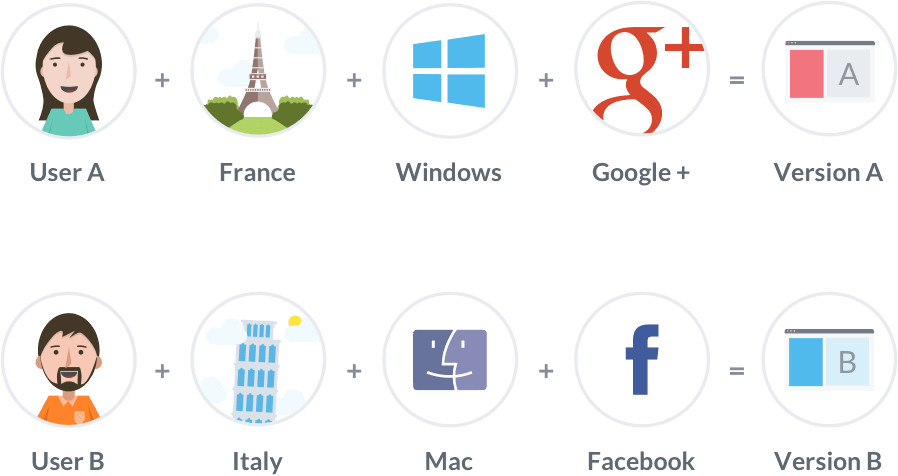
Image source: VWO
Then to optimize this process, AB tests are run on various elements of a landing page such as the color of a call to action button, a title of a page or an image. In the example below you can see what these sort of tests look like:
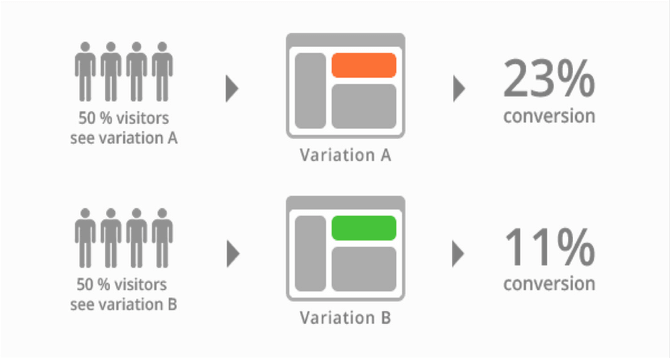
Basically marketers do not know what to test, so they look at the numbers, see patterns and guess what needs to be tested, then once the results come in, they’re not sure what they mean or what to optimize next. The reason for this is that behavioral targeting is a good start, but it isn’t enough.
Let’s take a look at the missing part.
The Missing Link
In order to test correctly and reach meaningful results, you need to have a strategy, and combine emotional targeting with behavioral to your testing methodology.
Emotional targeting is the missing link in most online marketing strategies and notably in conversion optimization. If behavioral elements such as time on page and type of device are what lead the behavioral targeting methodology, it is the emotional gain that leads the emotional targeting methodology.
The emotional targeting methodology derives from one of the most basic foundations of marketing and psychology: People are irrational beings and our decision making process is almost entirely emotional. Which is why, in order to sell you have to appeal to the emotional side of your customers.
Throughout the history of marketing, offline advertisers have always used emotion to derive sales and revenue. The offline advertising world focuses on the emotional value and not the features or pricing of a product like in the online world.
Take Sprite for example, their ads are meant to make us feel excited, alive and energized. There’s no text telling us that drinking Sprite will energize us or that it’s better than any other drink, by simply using colors, images and movement Sprite make us feel it.
When it comes to the online world the average person sees hundreds of messages and ads a day and has to somehow navigate through them all and make a decision. We tend to think that by highlighting our features or cost customers will choose our product when in fact, no matter what you are selling, what resonates with with your customer isn’t your product but the emotional gain.
Good marketing leaves an impact which is focused on helping customers become better versions of themselves. Showing them the person they can be (who they dream to be) and how the product can help them become that person.
The online advertising world is almost completely behavioral, technical and product focused. It’s all about the features or the pricing of a product, using a lot of text to explain why it is better than another. For example: Skype.
Skype uses its headline to tell you what it does and a preloaded video showing you people using Skype. The most highlighted information on the page is the features such as “Call, message and Share” and so is the price (free).
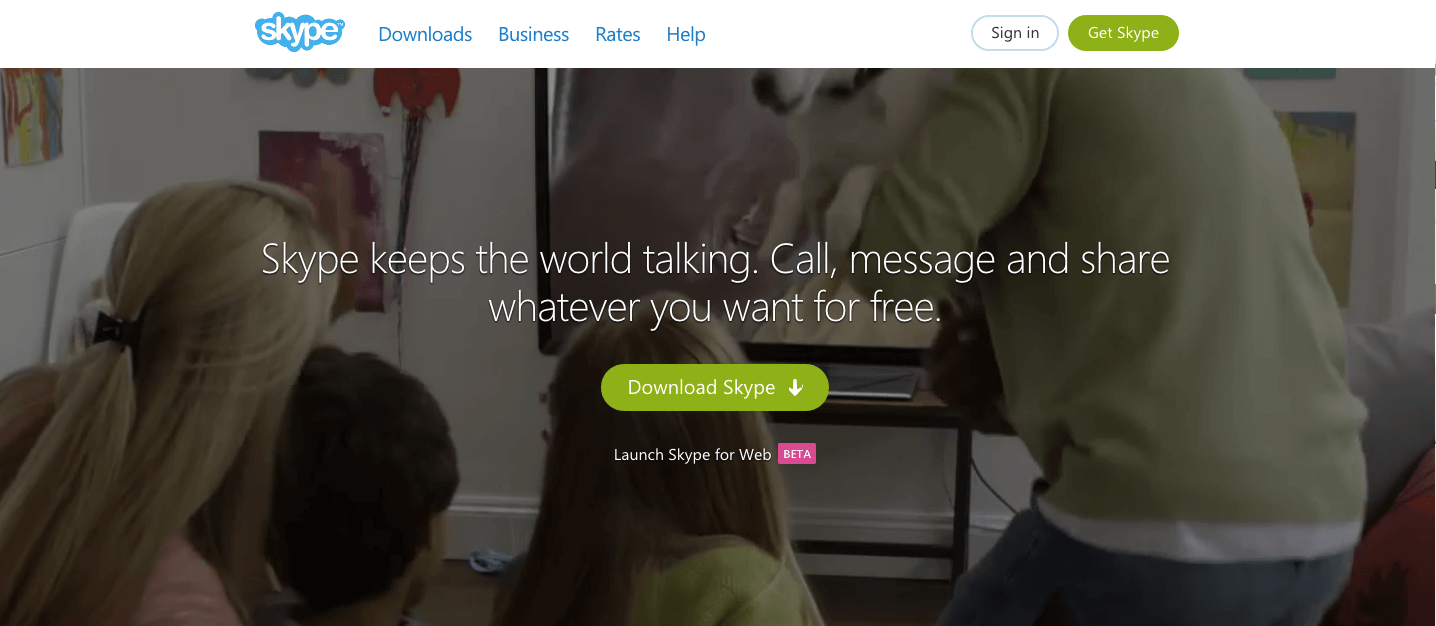
But what would an offline Skype ad look like? Would they promote themselves the same way? Apparently not.
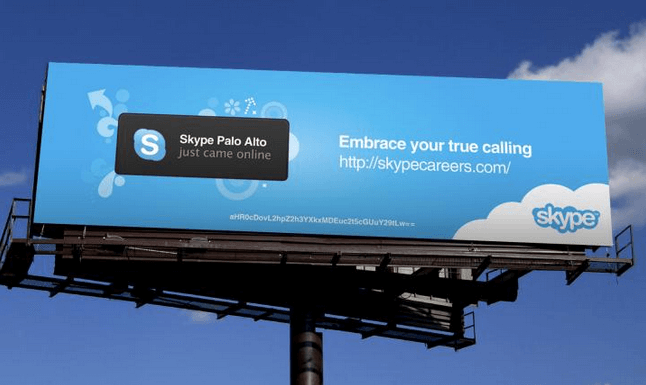
While in the online world Skype is all about their product, their billboard is clearly appeals to the emotion of their customers and the people they want to hire – “Embrace your true calling”.
To me this makes no sense, though we know emotions sell, the offline world which cannot track its results solely uses emotion while the online world which allows for seamless tracking and analysis focuses on behavior only.
Putting Theory Into Practice
Let’s have a look at how applying emotional targeting can increase conversions dramatically and have an impact on entire business.
Working with WallMonkeys (a super cool print on demand service for decals and murals), our goal is to increase revenues and find a way to stand out from competitors.
Starting out we dug deep into the analytical data using heatmaps, Google Analytics and other tools to determine user behavior and the key points that needed optimizing within the funnel. We then ran our emotional triggers research and identified the triggers we wanted to start testing.
Two things became clear from the research, on the strategic side the target audience (mainly parents) needed to see how Wallmonkeys changes their entire home for the better. On the user behavior side we realized that the majority of customers started their purchase using the search bar.
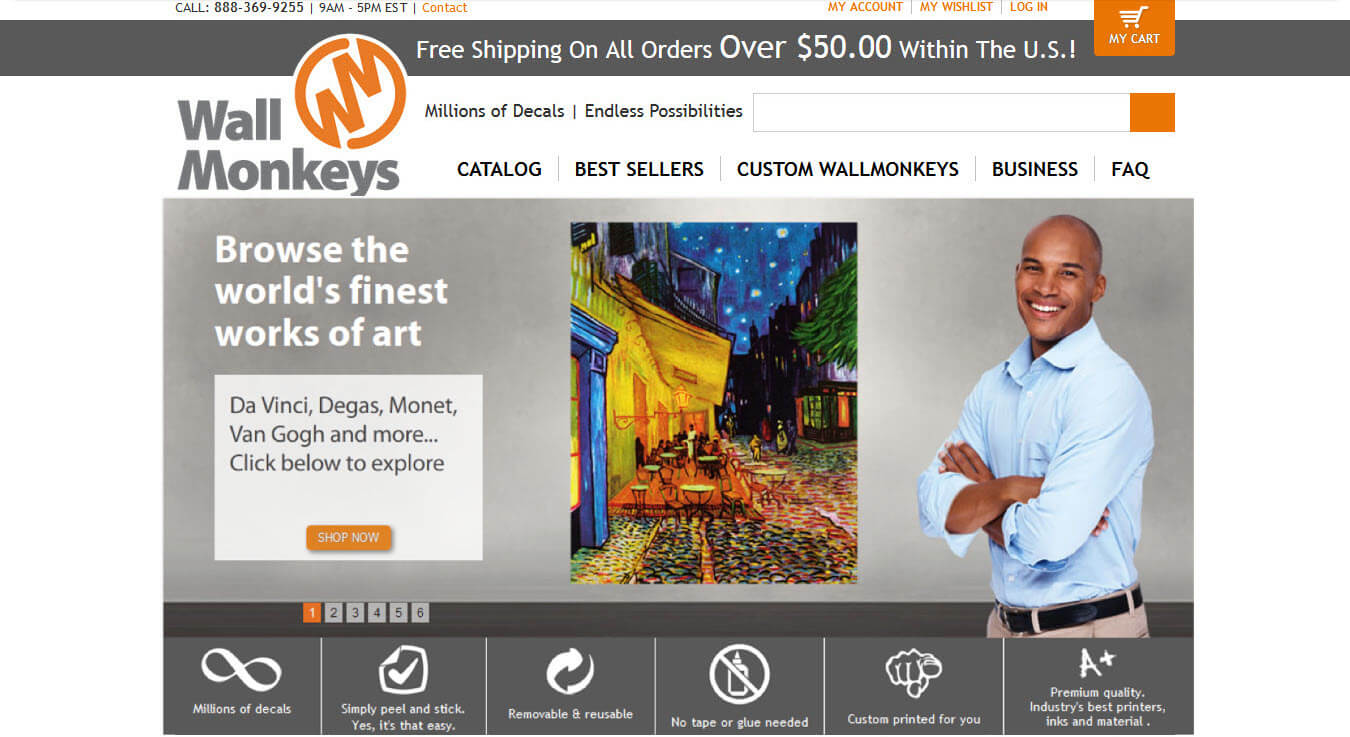
The changes we made to the homepage were in structure, color, image and usability. Wallmonkeys is a fun, cool and exciting experience which had to stand out.
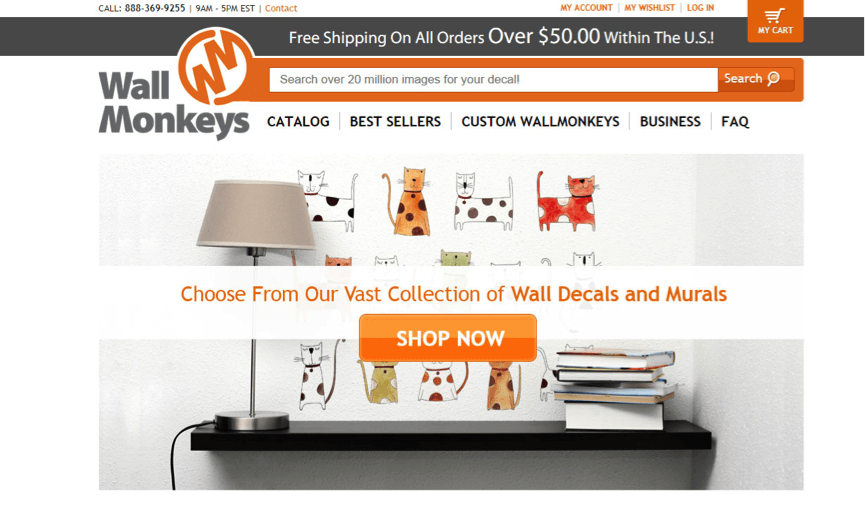
Using color psychology, we highlighted the fun, fresh and cool service that is WallMonkeys. The image was changed to reflect the target audience and the end result (brightening your home). In terms of usability, we enlarged the search bar and centered it. These changes lead to a 550% increase in revenue. By catering to the emotional needs of our visitors and emphasising the search bar in our test we increased the amount of searches on the site and also discovered that ‘search’ wasn’t producing relevant results at all times. This discovery allowed WallMonkeys to optimize search and as a result produce an even higher increase in revenues. By testing a strategy and making meaningful changes we were able to increase revenues and change important processes within the business.
Getting Started with Emotional Targeting
To get started with emotional targeting here are a few tips and steps you should follow:
#1 Getting to know your users
How well do you know your customers? Can you answer questions about their life, dreams and hobbies? There’s more to our customers than browser type and geographical location. Checkout this step-by-step guide to creating a marketing persona and dive deeper into successful emotional targeting.
#2 Show it don’t tell it
Show don’t tell is the art of conveying a message in a way that consumers can quickly comprehend and see what’s in it for them. Instead of telling visitors how amazing your product can be for them, show it to them by using images, colors and the right headlines.
A few facts about text vs. images and color:
-
Almost 50% of our brain is involved in visual processing. (Human anatomy and psychology)
-
It takes us only 150ms to process a symbol and only 100ms to attach a meaning to it
-
On average users only read 28% of words per visit (more likely to read 20%). (Nielsen)
We suffer from an overload of information and the best way to convey a message quickly is by using visual and colorful aids. Which means: Show it, don’t tell it.
People do not read long texts or have time for them, make the most of the first 3 seconds a visitor lands on your page and show them without effort what’s in it for them.
Manpacks for instance could write on their landing page that they have an endless supply of condoms, underwear and socks. Then they could also explain about their fast delivery, the wide selections and how cool they are. Instead they use an image, well-known logos and one powerful headline to portray all of these values within seconds.
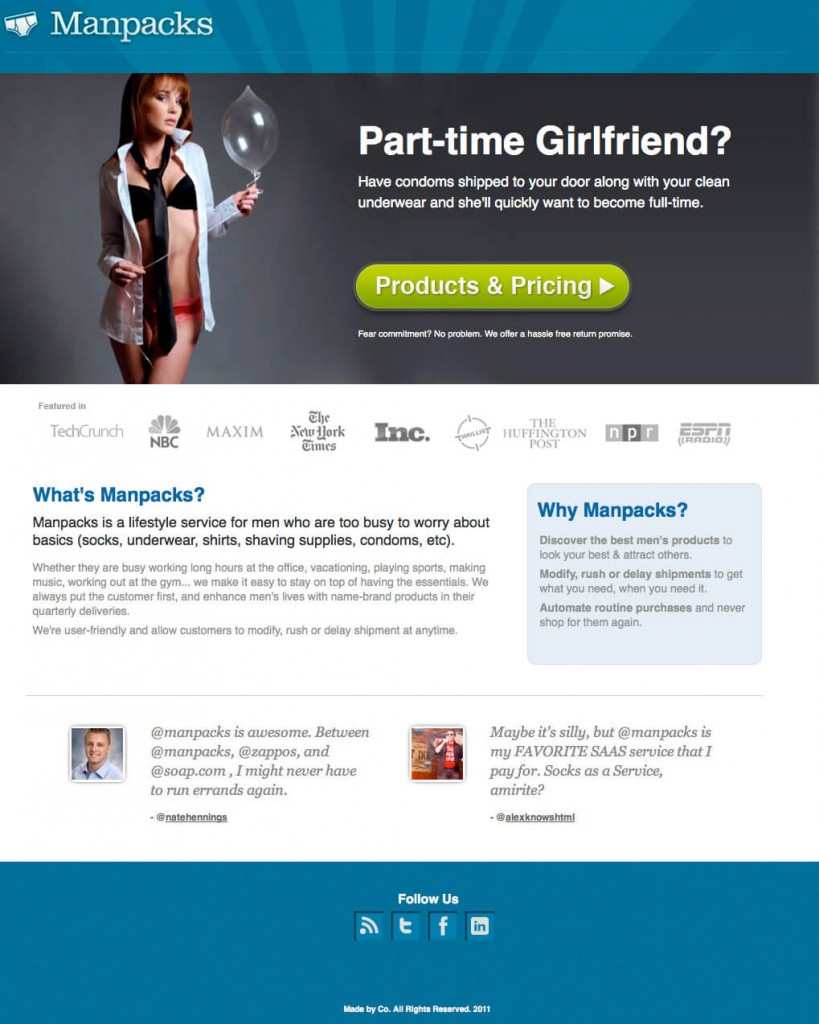
Which brings me to my next point:
#3 Value Over Features & Benefits
In Experian’s latest Digital Marketer Survey 49% of marketers said their top challenge is standing out against competitors.
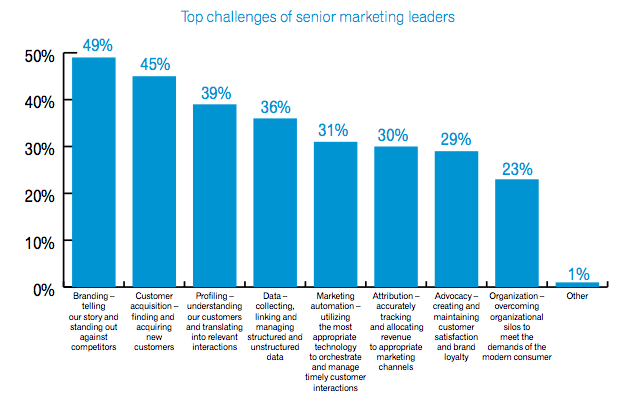
When it comes to standing out against competitors, most online companies showcase their product, features and pricing when in fact using emotional targeting you could stand out in a crowd of features and bullet points.
Car insurance for example is an extremely competitive industry and you have to really stand out in order to succeed. In the insurance industry one of the most important elements people check is pricing; people want cheap car insurance and every company promises to do so. Let’s take a look at two companies saying the same, but very differently:
InsuanceStep has a landing page that says it: “Save up to 70%”.
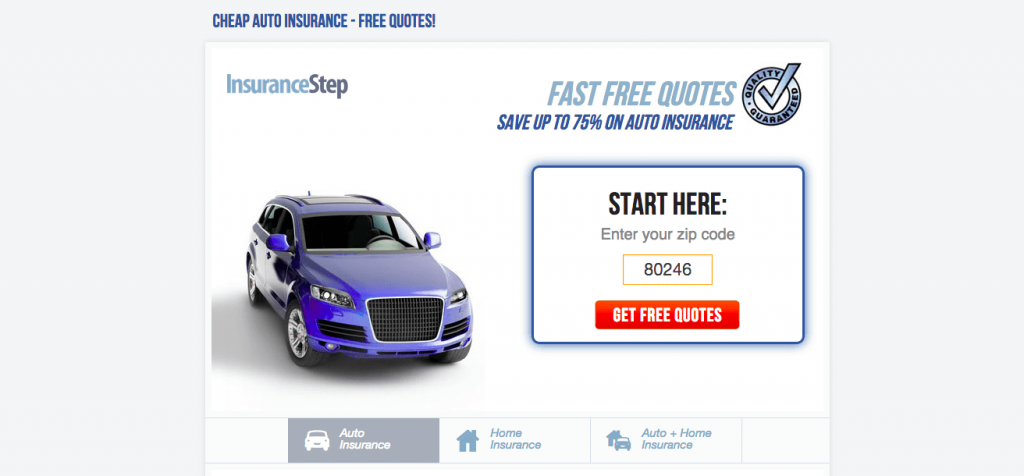
While Quotelab, makes you feel it:
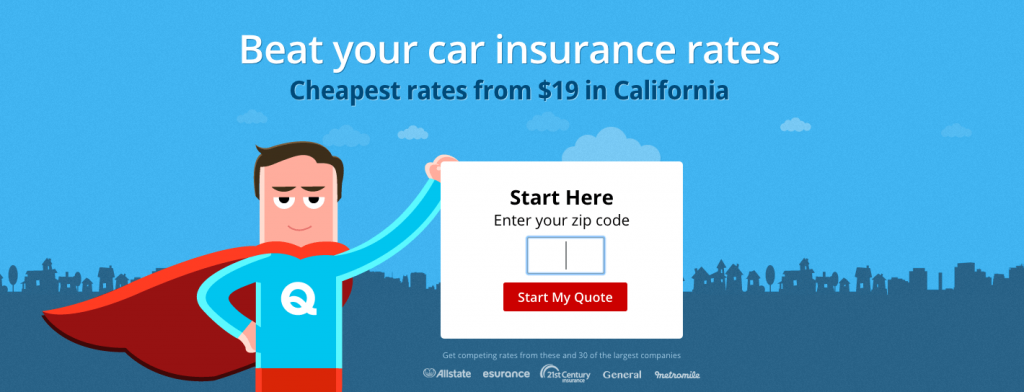
Note how their funnel is exactly the same, yet the use of the right colors (blue for trust and stability), a strong image and trust icons make all the difference.
#4 Using Color Psychology
Color plays an important role in emotional targeting. In fact it has long been proven by psychological experiments that different colors have an effect on specific parts of our brain and can change our feelings. For years artists, designers and advertisers have used color to affect us emotionally and change our feelings towards specific brands, logos and pieces of art. A recent study showed that the color of a logo affects consumer emotion towards its brand. The following article will show you how to increase conversions using color psychology.
#5 AB Test your Concepts
Last but not least, start AB testing your concepts and strategies. Once you’ve profiled your users, created a strategy and designed your landing page (or any other part of the funnel), it’s time to test it and gain insights about your customers. This is how you run meaningful tests that lead to higher conversions and important insights. Don’t forget to checkout this AB test checklist before you launch.
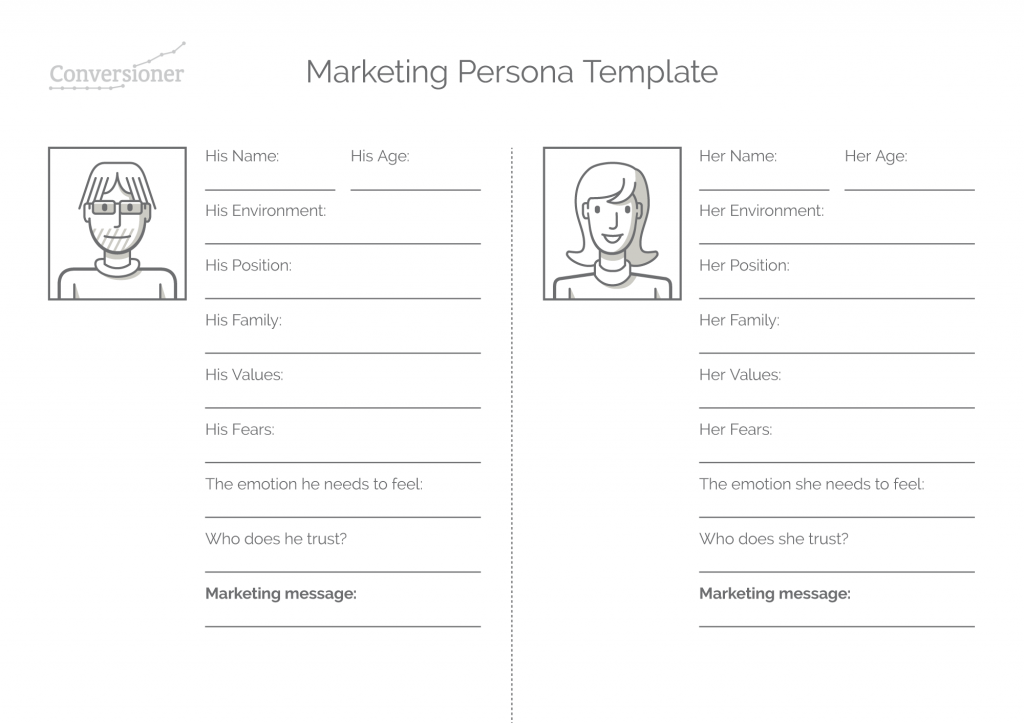
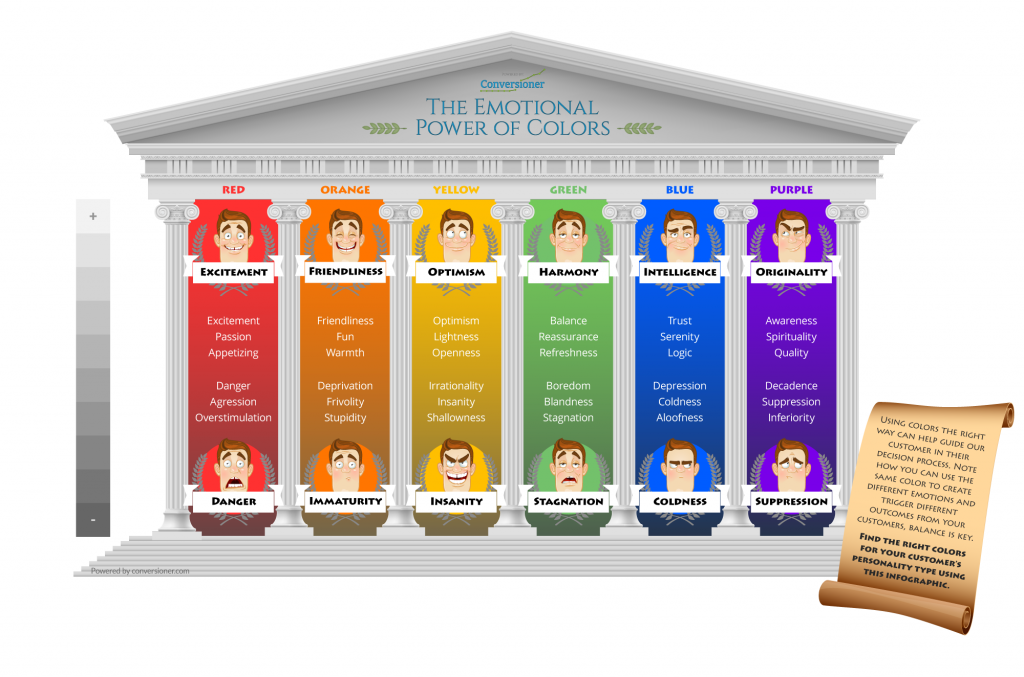


Pingback: This Week in Internet Marketing 2015 07 28 | Rise to the Top Blog()
Pingback: How to Utilize The Psychology of Persuasion to Increase Conversion Rates | endlessness()
Pingback: How to Utilize The Psychology of Persuasion to Increase Conversion Rates | Premier Web Development()
Pingback: How to convert mobile visitors into customers - Multiele()
Pingback: 22digitals()
Pingback: How to Utilize The Psychology of Persuasion to Increase Conversion Rates | Profit Maxim Tips&Tricks()
Pingback: Cayla Johanna()
Pingback: How to Convert More Customers Using Emotional Targeting()
Pingback: Apply Emotions and Learn More from Your A/B Tests | Optimizely Blog()
Pingback: Apply Emotions and Learn More from Your A/B Tests | SEO()
Pingback: Apply Emotions and Learn More from Your A/B Tests | ContentMarketing()
Pingback: Expert Roundup: eCommerce Homepage Design Best Practices()
Pingback: Best Conversion Optimization Posts You Should Read()
Pingback: Speaking with Emotion: How To Increase Conversions with Words()